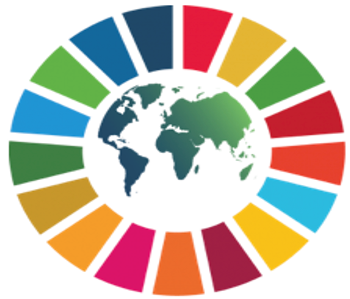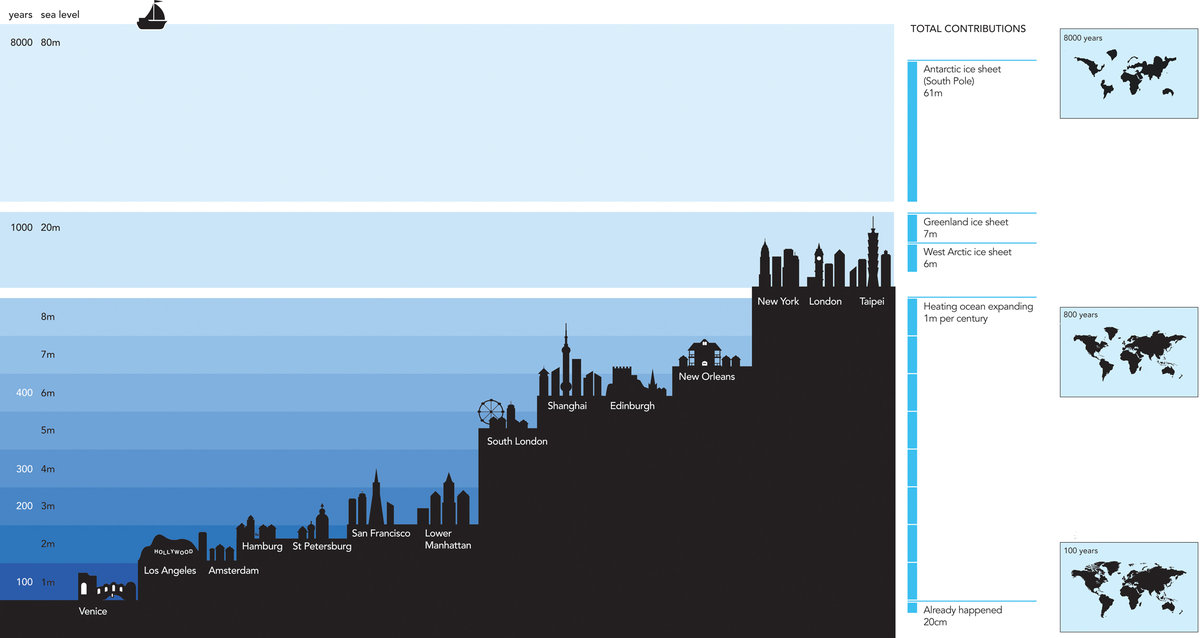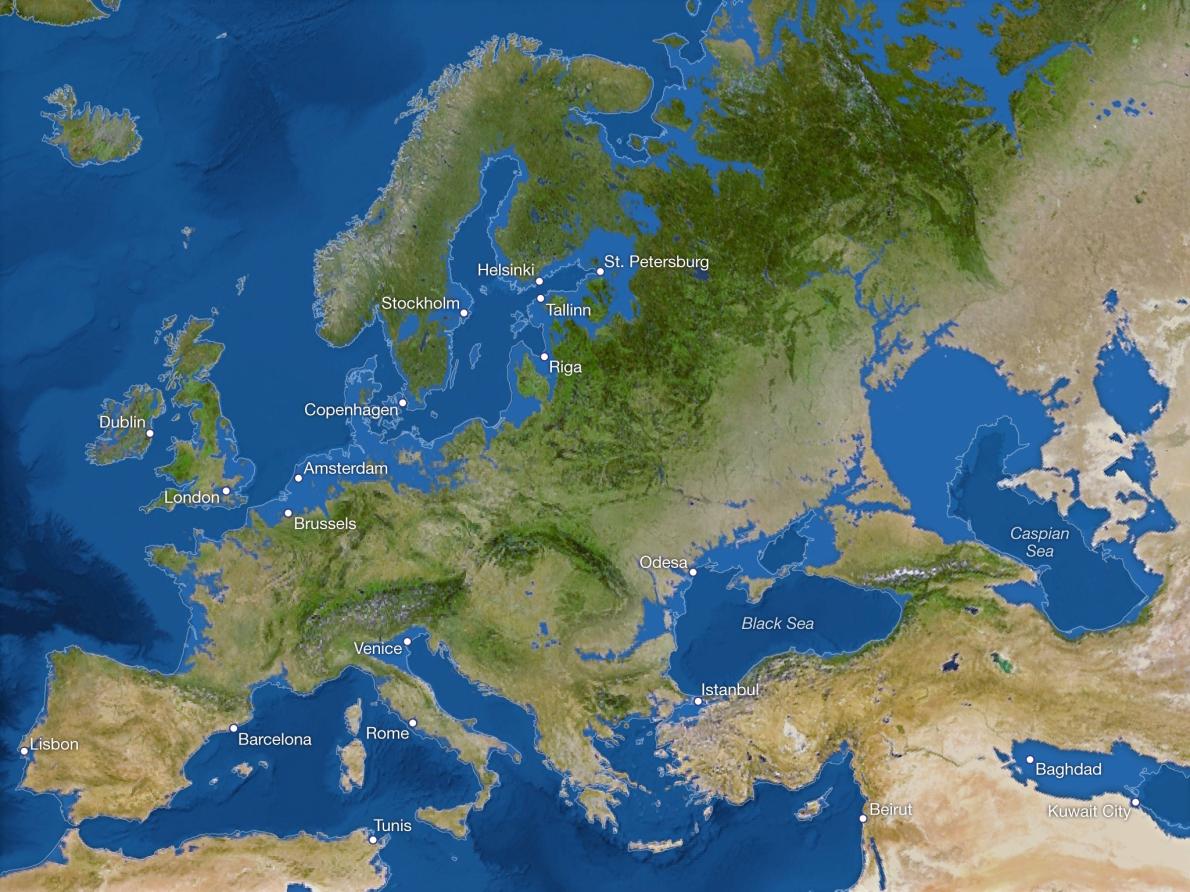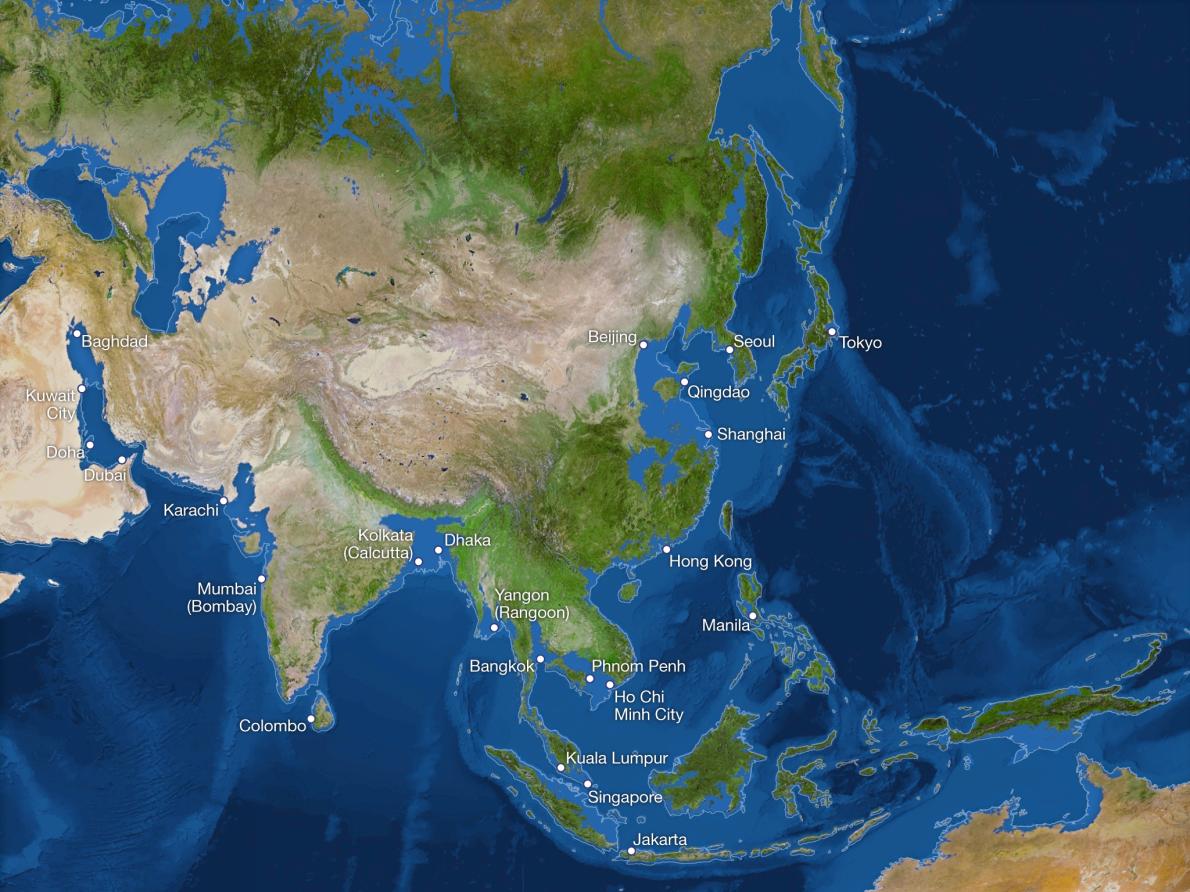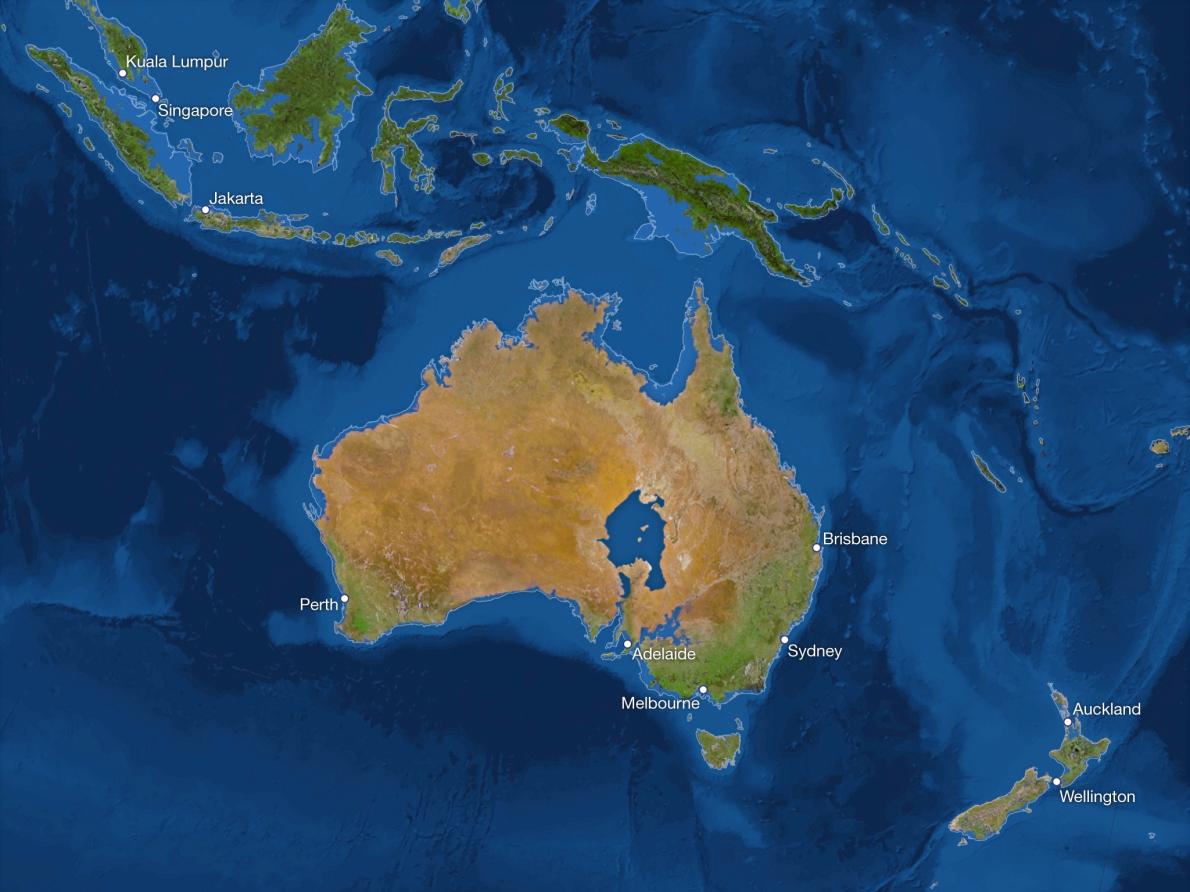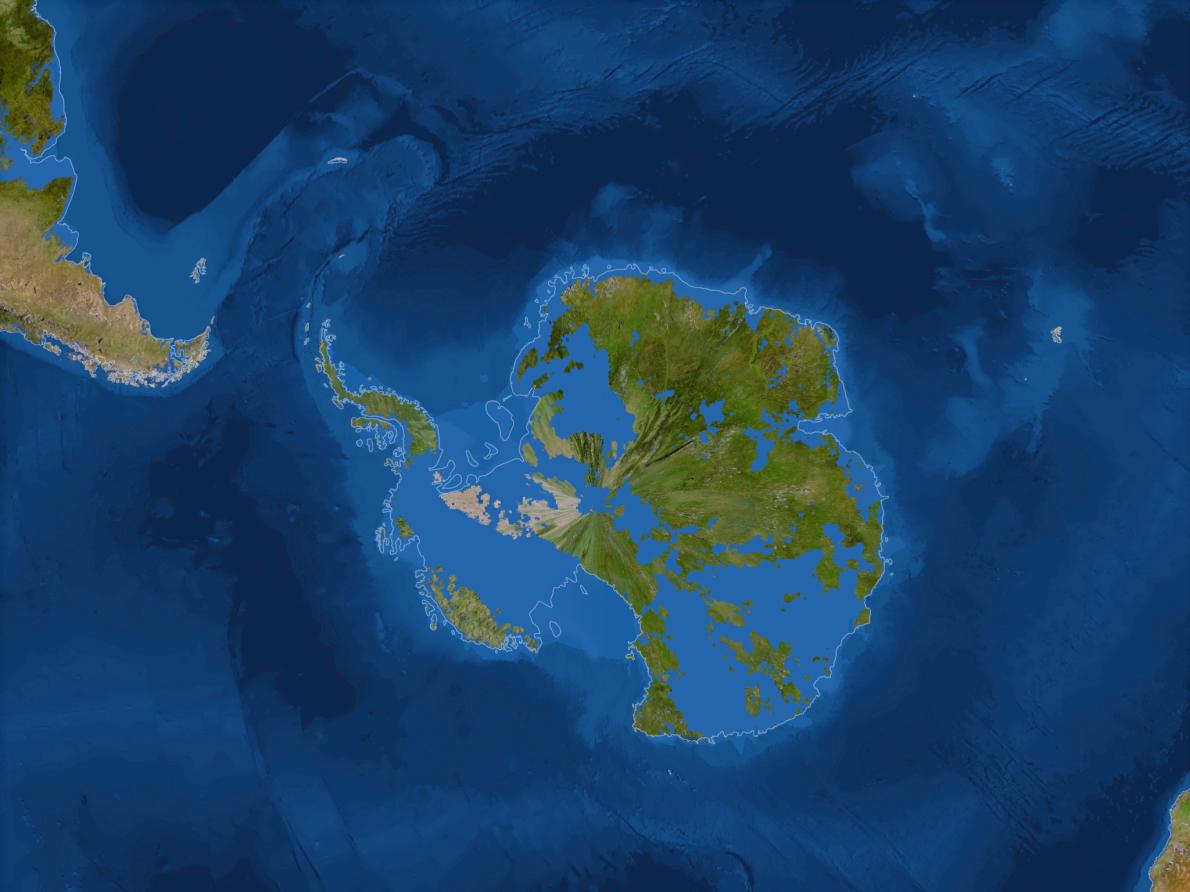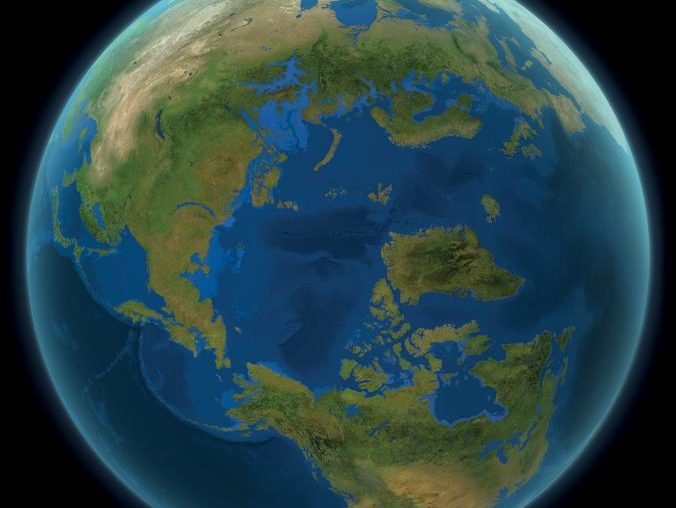Rising waters
Do you know how much ice there is in the world ? Or how the world would look if all of it melted ? Read the article in the National Geographic, September 2013; or check out the video below ⇓.
Click on a map below ⇓ to enlarge the part of the world where you live.
All of the world will experience the imact of rising sea levels, the low elevation coastal zones (LECZs) more than others. Below are are “closeups” of some of the LECZs in southern United States, eastern India and Bangladesh:
Florida ↓, Mississippi ↓, Bangladesh ↓, Earth ↓
The images below (The Earth Observatory), taken by the Moderate Resolution Imaging Spectroradiometer (MODIS) on NASA’s Terra satellite, show how waterways passing through Nepal, Bihar, Eastern India, and Bangledesh changed through the monsoon.
The first image, on September 6, 2017, shows the river Koshi running through Bihar, the Ganges and several other rivers upstream of it when flood waters of the monsoon covered immense swaths of the landscape. The second image shows the same area on May 24, 2017, before monsoon rains began. The flooding was catastgrophic: it killed almost 300 people. And displaced ~700,000 (floodlist).
As the climate changes, low-lying areas will increasingly face more frequent and intense extreme weather events: sea level rise, destruction of houses and farms, immigration, food insecurity, to list a few of global warming’s effects. About 120 million people live on the Ganges Delta under the threat of repeated catastrophic floods due to heavy runoff of meltwater from the Himalayas and due to the intense rainfall during the monsoon season. (NASA)
Particularly at risk, for example, is Bangladesh, shown at the lower right of the map above, home to the Ganges-Brahmaputra Delta, the largest delta in the world. It spreads ~105,000 km2 across the country, and spans ~354 km as it enters the Bay of Bengal. With an average elevation of ~1.5m in the west and ~4.5m in the east, it is notably vulnerable to the rising bay waters:
- Floodplains comprise ~80% of the country ?
- high population density: 1252 people/km2 ?
- high levels of poverty ?, ? though decreasing ?
- high dependence of livelihoods on fishing, agriculture
A three-foot rise in sea level would submerge almost 20 percent of the country and displace more than 30 million people.? For further information, see Climate Change & its Impacts on Bangladesh.?
Much of southern Florida is low lying terrain – even the highest points are a scant ~60 meters (above sea level). The images below are from the Space Shuttle Endeavour, dated Feb. 11 2000.? They show that low lying grounds along the coast are susceptible to storm surges and flooding. Large areas of land risk being completely submerged as a result of rising sea levels.
An article ? (03/2015), by Alexandra Ossola, urges the debate become less political and more pragmatic to mitigate the effects of climate change and move forward. She cites that almost half of Republicans believe “climate change is not a real problem” while the same fraction of Democrats believe that it’s “a major problem – could become a crisis”.
Since March 2015, Florida Department of Environmental Protection (DEP) were banned from using the phrases “climate change” and “global warming”, perhaps to be less discordant with Governor R Scott (R; since 2011) and his view that “climate change is not caused by human activity” (“I’m not a scientist” ?).
Recent flooding of the Mississippi in the winter of 2016 made for the second time in 200 years a top-40 list of flood crests at St. Louis – the other flood occurred in December 1982 during a major El Niño. See NASA’s satellite photos and read more. ?
Below is a simulation of what happens to the earth when the ice-caps melt …
